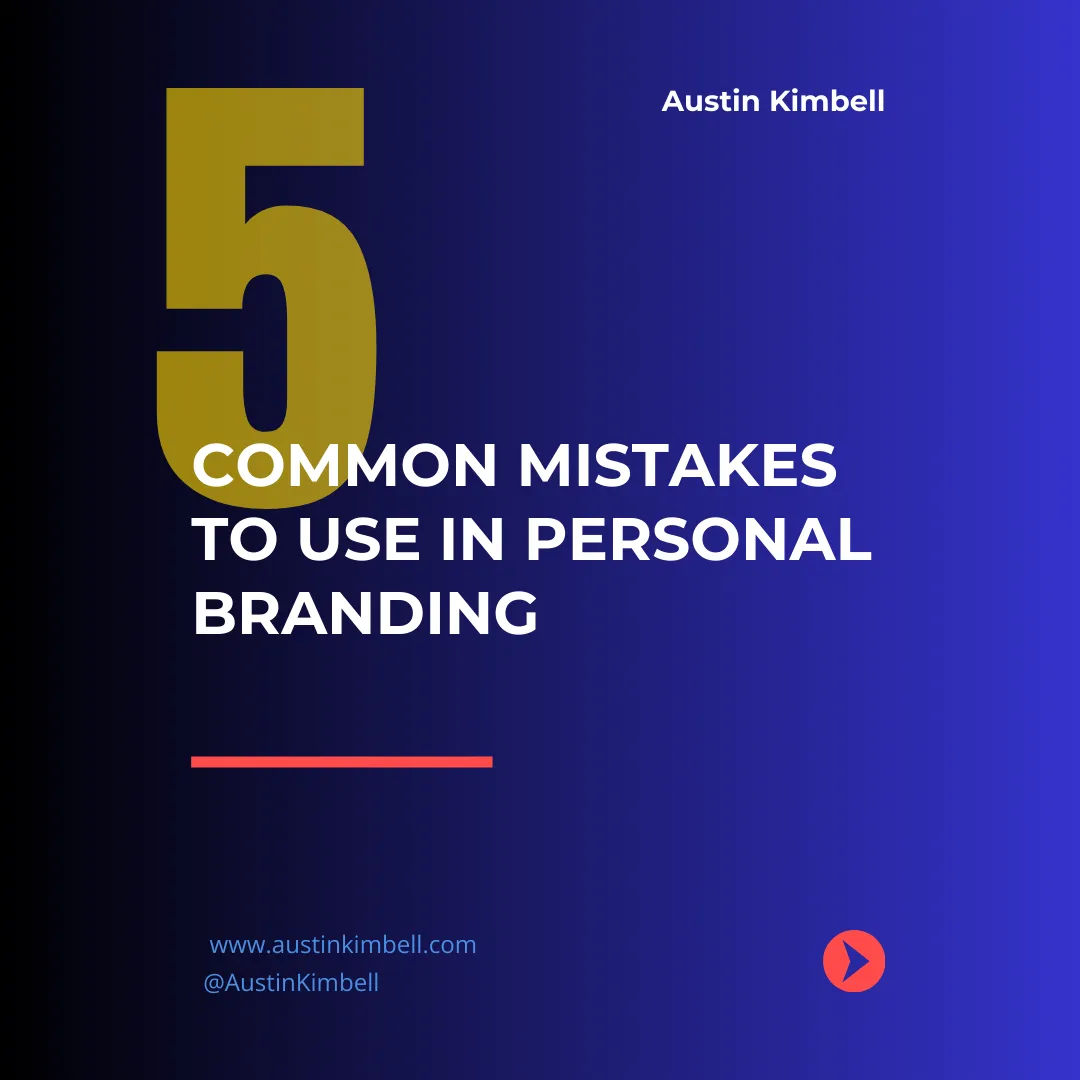
Common Mistakes to Avoid in Personal Branding
Avoid These Common Pitfalls in Personal Branding
Introduction
Building a personal brand is a journey that requires careful planning, consistency, and continuous improvement. However, even with the best intentions, it’s easy to make mistakes that can undermine your efforts. In this blog post, we’ll explore five common mistakes in personal branding and how you can avoid them to build a brand that stands out and resonates with your audience.
1. Lack of Consistency
Inconsistent Messaging Confuses Your Audience
One of the biggest mistakes in personal branding is a lack of consistency. This can manifest in various ways, such as fluctuating messaging, inconsistent visual elements, or conflicting values across different platforms. When your brand isn’t consistent, it can confuse your audience, making it difficult for them to understand who you are and what you stand for.
The Importance of Consistency
To avoid this, ensure that your brand’s voice, visuals, and values are consistent across all platforms. This means using the same color schemes, logos, and tone of voice in everything from your website to your social media profiles. Consistency helps build trust and recognition, which are crucial for establishing a strong personal brand.
Tools to Maintain Consistency
Consider leveraging tools like C4 Payments to automate and streamline your branding efforts. Automation can help ensure that your messaging remains consistent, regardless of where or when your audience engages with your content.
2. Ignoring Your Audience
Engagement is Key
Another common mistake is ignoring your audience. Personal branding isn’t just about projecting your image; it’s also about building relationships with your audience. Not engaging with your audience can make you seem detached and unapproachable, which can weaken your brand.
How to Engage Effectively
Always interact and respond to your audience’s feedback and comments. Use social media, blog comments, and email newsletters to foster a two-way conversation. By engaging with your audience, you show that you value their input and are committed to building a community around your brand.
Personal Development and Audience Engagement
Additionally, don’t ignore the importance of personal development. The lessons you learn from your own growth can be shared with your audience, adding value to their experience. This not only benefits your audience but also reinforces your position as a leader and mentor in your field.
3. Overpromising
The Danger of Overpromising
Overpromising is a trap that many fall into when building a personal brand. It’s easy to get caught up in the desire to impress your audience, but making promises you can’t keep will damage your credibility and trust.
Setting Realistic Expectations
Set realistic expectations that you are confident you can deliver on. It takes time for the right audience to see your content, so stay true to your brand image and let your work speak for itself. It’s better to underpromise and overdeliver, creating a positive surprise for your audience.
The Long-Term Impact of Overdelivering
When you consistently deliver more than what is expected, you build a reputation for reliability and excellence. This can lead to increased loyalty from your audience and greater opportunities for your brand.
4. Not Tracking Performance
Why Tracking is Crucial
Failing to track your brand’s performance is a missed opportunity for growth. Without analytics, you won’t know what’s working and what isn’t, making it difficult to refine your strategies and improve your brand’s impact.
How to Track Effectively
Use analytics tools to measure your success and adjust your strategies accordingly. Key metrics to track include engagement rates, conversion rates, and audience growth. By monitoring these metrics, you can make informed decisions that help your brand evolve and improve over time.
Automation and Performance Tracking
Again, tools like C4 Payments can be invaluable here. They can automate the process of gathering and analyzing data, giving you insights that help you make data-driven decisions about your brand.
5. Ignoring Personal Development
The Role of Personal Growth in Branding
Personal development is a crucial component of personal branding that is often overlooked. Your brand should evolve as you grow, and investing in personal development helps keep your brand relevant and authentic.
Learning and Teaching
Use the items you learn in your personal development journey to teach others. This not only benefits your audience but also reinforces your own learning. As you grow, your brand grows with you, keeping it dynamic and reflective of your current values and expertise.
Continuous Learning and Brand Authenticity
Continuous learning ensures that your brand remains authentic and resonates with your audience. It also positions you as a thought leader who is committed to self-improvement, a quality that will attract a dedicated following.
Conclusion
Building a strong personal brand requires more than just a great logo or catchy tagline. It requires consistency, engagement, realistic expectations, performance tracking, and personal development. By avoiding these common mistakes, you can create a personal brand that not only stands out but also delivers real value to your audience.
Remember, the journey of personal branding is ongoing. Stay committed, keep learning, and be patient. The impact of a strong personal brand will be well worth the effort.
External Links:
Learn more about C4 Payments and how it can automate your branding efforts.
Explore the benefits of Underpromising and Overdelivering.
Discover the importance of Engaging with Your Audience.
Need more help? Schedule a call with me to discuss how we can refine and strengthen your personal brand for lasting success.
